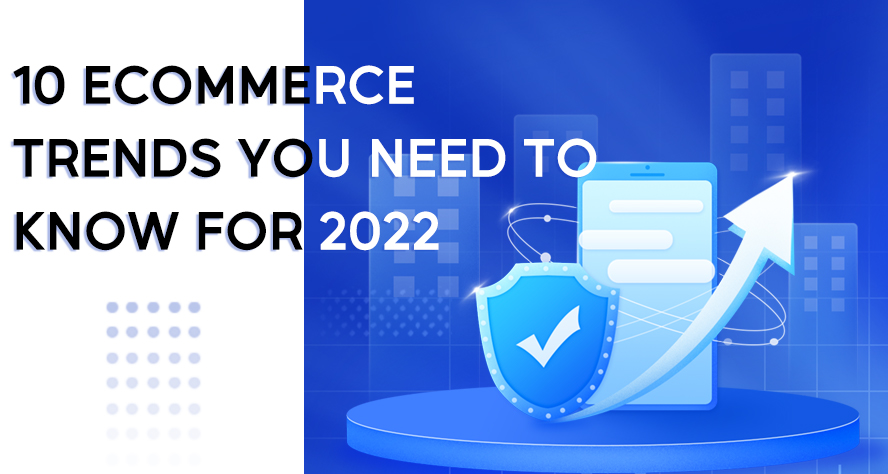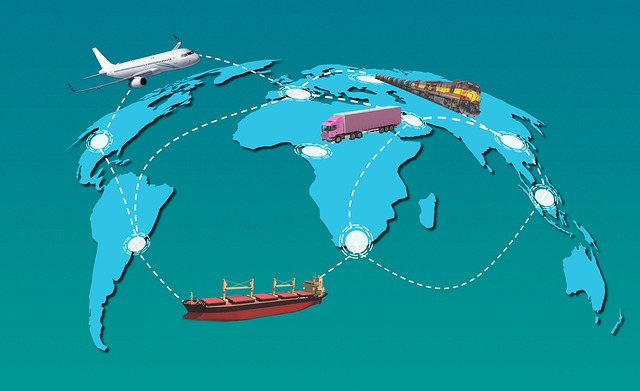
In 2022, eCommerce will continue to grow, with more shoppers turning to online shopping as their primary acquisition form. Accordingly, more and more people are shopping online.
In 2018, online shoppers spent an estimated $2.3 trillion worldwide. This number is expected to grow by 2022, reaching $2.8 trillion. In addition, the number of online shoppers continues to increase as more and more people switch to online shopping over traditional shopping methods. As a result, the percentage of consumers who shop online is projected to reach 67% by 2022, up from 56% in 2018.
For instance, mobile commerce is increasing, too, with smartphone users spending over $300 billion annually on mobile apps and websites. This figure is expected to increase by 2021 to over $330 billion. This is partly due to the increase in mobile usage and the rise of online shopping to save time. Here are three key trends that you need to know about if you want your business to stay ahead of the curve:
1. Mobile Commerce:
More shoppers are shopping on their phones and tablets. From smartphones to wearables, more and more people are shopping online on their mobile devices. What effects will this have on the future of eCommerce trends in 2022?
Mobile commerce will continue to grow and thrive in the next few years. This is due to a few reasons:
- More people are shopping on their phones and tablets than ever before.
- New platforms and devices are being released that make shopping on mobile more accessible than ever.
- There is an increase in eCommerce platforms that allow shoppers to buy goods and services anywhere.

As mobile commerce becomes more popular, retailers need to keep up with the trends to stay afloat. Some of the most popular mobile commerce platforms include Amazon Kindle Fire, Apple iPhone/iPad, Samsung Galaxy Gear smartwatch, Windows Phone Marketplace, and Android Marketplaces. These platforms provide shoppers with a wide range of options, including downloads of apps and games and online shopping.
2. Personalization Experience:
Retailers respond to customer demand for more personalized options with customization tools and services. The eCommerce trends 2022 report finds that almost half of shoppers (48%) would like more personalization options, such as choosing the clothing style, color, and size for each item in a purchase. This demonstrates the importance of personalization to customers and retailers alike.
Retailers are responding by offering customization features on virtually every product page. Some examples include adding text or images to product descriptions, providing customer feedback forms, selecting preferred payment methods, and even allowing customers to create their product pages. These customizable features give customers an enhanced shopping experience and increase brand loyalty.
Customers appreciate personalized options because they make shopping easier. They can quickly find what they’re looking for by customizing products according to their preferences.
3. Cross-Device Shopping:
Consumers are increasingly shopping across devices, including desktop computers, laptops, smartphones, and tablets. This cross-device shopping trend has created new opportunities for businesses to reach customers where they are most likely to spend their time. These technologies can help companies identify consumer patterns and preferences more accurately, leading to more successful product sales. Additionally, retailers must continue investing in omnichannel strategies to sell products through multiple channels. Finally, to stay competitive, businesses must continue adapting their marketing strategies.

4. Shoppable live streams:
Online retailers are always looking for ways to improve the shopping experience for their customers. In 2022, expect to see many changes in how retailers design and deliver the best shopping experiences. The shoppable live stream is one of the key shopping eCommerce trends you can expect to see in 2022.
Hosts interact with audiences in real-time through streaming channels such as YouTube, Facebook Live, and Tiktok to personalize the experience when interacting with your product or service.
This combination of interaction, entertainment and instant purchase into a unique shopping experience gives customers a sense of authenticity and trust, and it has the opportunity to gain more potential customers.

5. AI and Machine Learning:
The rapid growth of artificial intelligence (AI) and machine learning will play a significant role in shaping eCommerce trends in 2022. As these technologies evolve, they will help merchants create more personalized experiences for their customers and make it easier and faster to conduct transactions. Moreover, machine learning is a subset of artificial intelligence that uses algorithms to “learn” from data. This technology can be used in many ways, including improving eCommerce website performance.
6. Augmented Reality:
Augmented reality or AR is a technological advancement that allows users to see digital objects and information overlaid in the real world. For example, augmented reality could improve the shopping experience in eCommerce by providing product information, 360 views of products in a store, and easy navigation to specific products. Additionally, augmented reality could help shoppers find items they are looking for more quickly and easily. By using Augmented Reality in eCommerce, retailers can create an immersive experience that draws customers into their stores and encourages them to make purchases.
7. Chatbots and Virtual Assistants in Ecommerce:
Chatbots and virtual assistants are two of the most popular technologies in eCommerce trends 2022. They are already being used to help customers find what they’re looking for, make purchases, and get customer service support. In 2022, chatbots and virtual assistants will become even more critical in eCommerce. They will help customers navigate the shopping experience, decide which products to buy, and get help with customer service issues.

8. Social Commerce
Social commerce can be seen as an extension of your e-commerce activities. The emergence of Facebook Shops, Twitter card shop buttons, and the TikTok Shopping suite are all proof of this. You have to admit that purchases are increasingly taking place on one of the many social media platforms such as Instagram or TikTok.
9. Blockchain Technology in Ecommerce:
Ecommerce is booming and with good reason. It’s a great way to shop for the items you need and want without leaving your comfortable home. However, eCommerce isn’t the only way to purchase items; there are many other ways. One of these methods is blockchain technology.
The benefits of using blockchain technology in eCommerce are numerous. First and foremost, it eliminates the need for a middleman. This means that you can trust that your products are authentic and haven’t been tampered with. Additionally, it allows buyers and sellers to interact directly without an intermediary.
Finally, blockchain technology makes it possible to track everything from the origin of an item to its sale on online platforms. You may see more and more applications of blockchain in e-commerce in the future.
10. Supply Chain Optimization:
Ecommerce has seen rapid growth over the last few years as companies look to capitalize on online sales. While many different delivery channels are available, eCommerce companies should focus on optimizing their supply chains to improve efficiency and lower costs.
- Increased use of drones for delivery: Drones have become increasingly popular for delivering goods, and this trend will continue. Delivery companies such as Amazon Air are already using them extensively, and this technology is likely to become even more widespread in the future.
- Increased use of robotics and artificial intelligence in logistics: Robotics and AI can speed up the process of sorting and shipping products, reducing the need for human labor. This technology is already being used in some parts of the supply chain, such as warehouses.
- Greater focus on sustainability: Companies want to reduce their environmental impact and make sure their products are sustainable. This means using more recycled materials and using less energy in production. It also means looking for ways to reduce manufacturing emissions.

Conclusion
In conclusion, eCommerce trends in 2022 continue to increase, with innovations and changes happening. Hence, several eCommerce trends will continue to grow in popularity in the next few years. These include using AI and machine learning to personalize shopping experiences, the growth of subscription-based services, and the increasing popularity of virtual reality and augmented reality. These trends will help drive increased sales and profitability for businesses that adopt them due to the continued growth of online sales and the increasing trend of online shopping. Therefore, companies should continue to invest in eCommerce technology and develop strategies to accommodate this growing market, as it has the potential to help them reach new customers.
If you like this article and would like to know more about eCommerce, don’t forget to subscribe to us! And start selling with Nihaojewelry: https://bit.ly/3NfDQ8Y





